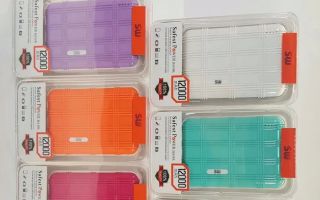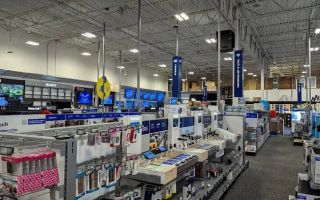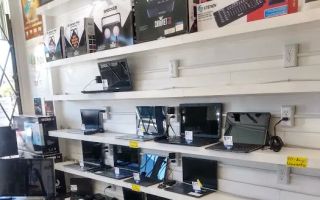How to Fix a Broken Appliance: A Comprehensive Guide to Home Appliance Repair
- 1. Why Learn to Fix Broken Appliances?
- 2. Common Appliance Problems and Solutions
- 3. Basic Steps for Troubleshooting Appliances
- 4. Tools You Need to Repair Home Appliances
- 5. When to Call a Professional for Appliance Repair
- 6. Real-Life Appliance Repair Stories
1. Why Learn to Fix Broken Appliances?
Fixing a broken appliance can save you both time and money. When something goes wrong with your refrigerator, washing machine, or microwave, it’s easy to think that you need to call a professional. However, learning how to fix common appliance problems can be incredibly empowering and cost-effective. Not only does it reduce the expense of hiring repair services, but it also gives you the ability to troubleshoot issues as soon as they arise, often without having to wait for a technician.
For beginners, knowing the basics of home appliance repair can also reduce the frustration of dealing with malfunctioning machines. It’s often easier than you think to solve simple issues, and with the right guidance and a bit of practice, you can repair appliances yourself, without needing specialized skills or knowledge.
2. Common Appliance Problems and Solutions
Home appliances can encounter a variety of issues. Here are some common problems and basic solutions to help you fix them:
- Refrigerator Not Cooling: If your refrigerator isn’t cooling properly, it could be due to dirty condenser coils, a broken door seal, or a malfunctioning thermostat. Start by cleaning the condenser coils, checking the door seal, and ensuring the thermostat is set to the correct temperature. If the issue persists, it might require a professional inspection of the compressor or refrigerant system.
- Washing Machine Won’t Spin: If your washing machine isn’t spinning, the culprit could be a broken drive belt, a faulty lid switch, or an unbalanced load. Check the drive belt for wear, ensure the lid switch is functioning, and make sure the load is balanced. If none of these fix the issue, the motor may need to be repaired or replaced.
- Dishwasher Not Draining: If your dishwasher is not draining, the issue might be a clogged drain hose, a blocked filter, or a malfunctioning pump. Start by inspecting the drain hose for blockages, cleaning the filter, and testing the pump. Regular maintenance, like cleaning the filter and checking the hose, can prevent future issues.
- Microwave Not Heating: If your microwave is running but not heating food, it could be a problem with the magnetron, the high-voltage capacitor, or the diode. Before troubleshooting, always unplug the microwave to avoid electrical shock. If you’re comfortable working with electrical components, you can check these parts, but otherwise, it’s best to call a technician for such repairs.
These are just a few examples of common appliance problems, and they often have simple solutions that you can tackle with basic tools and a bit of knowledge.
3. Basic Steps for Troubleshooting Appliances
When an appliance breaks down, the first step is troubleshooting. Below are the basic steps to help you get started on fixing your appliances:
- Turn off the appliance: Before attempting any repairs, always unplug the appliance or switch off the power. This ensures your safety while working on electrical components.
- Identify the symptoms: Pay attention to the signs of the problem. Is the appliance not turning on? Is it making strange noises? Are there any visible leaks or damage? Identifying the exact symptoms will help you narrow down the cause.
- Check for simple fixes: For many issues, there might be simple solutions like checking the power cord, ensuring the appliance is properly plugged in, or resetting the circuit breaker.
- Consult the user manual: The user manual is often the first place to look for troubleshooting tips. Many manuals include a section for common problems and their solutions, helping you solve the issue without the need for a professional repair service.
Following these basic troubleshooting steps can often resolve common appliance problems. However, if you’re not able to identify the issue or fix it yourself, don’t hesitate to call a professional for assistance.
4. Tools You Need to Repair Home Appliances
Having the right tools is essential when it comes to repairing home appliances. Here’s a list of basic tools you’ll need for most repairs:
- Screwdrivers: A set of both flathead and Phillips screwdrivers is essential for opening appliances and fixing internal components.
- Multimeter: A multimeter helps you measure electrical components, such as checking whether a part is receiving power or determining if the fuse is blown.
- Plumbing Tools: For appliances like dishwashers or washing machines, a wrench and pliers can help tighten or remove hoses and connections.
- Voltage Tester: A voltage tester is an important tool for checking if electrical components are working correctly and for ensuring safety before you begin work.
- Cleaning Supplies: Basic cleaning supplies like rags, brushes, and a vacuum can help maintain appliances and prevent issues caused by dirt and dust buildup.
Having these tools on hand will ensure you’re prepared for most appliance repairs and can address common issues with ease.
5. When to Call a Professional for Appliance Repair
While many appliance issues can be resolved by yourself, there are times when calling a professional is the best option. Here are some instances when it’s important to seek professional help:
- Complex Electrical Problems: If the appliance has a significant electrical issue, like a malfunctioning motor or a blown circuit, it’s best to leave it to a professional to avoid electrical hazards.
- Under Warranty: If your appliance is still under warranty, attempting a DIY fix may void the warranty. Always check the terms and conditions before performing any repairs.
- Dangerous Issues: For issues that involve gas lines, high-voltage components, or other potentially dangerous situations, it’s safer to call a professional technician who has the proper training and tools to fix the problem safely.
If in doubt, it’s always better to consult a professional to ensure the job is done correctly and safely. However, by learning basic troubleshooting, you can tackle many problems on your own and save money in the process.
6. Real-Life Appliance Repair Stories
Many people have faced appliance breakdowns and successfully tackled the problem themselves. Take Sarah, for example: “My washing machine stopped draining properly. I watched a few YouTube tutorials and found that the drain hose was clogged. After cleaning it out, the machine worked perfectly again. I was so proud of myself for fixing it without calling anyone!”
Similarly, David shared his story: “The oven in my kitchen started emitting a strange smell. I realized the issue was a dirty heating element. After cleaning it, the smell went away, and the oven worked as good as new. If I hadn’t known to clean the element, I would’ve called a technician for no reason.”
These real-life stories demonstrate how learning basic appliance repair skills can empower you and save you money. With the right tools and knowledge, you can handle many common issues without the need for costly professional services.
Computer Repair Near Me
Recommended
Why Is My Computer Making Loud Fan Noises? – Causes and Fixes
Discover why your computer is making loud fan noises and learn how to fix it. Explore common causes such as overheating, dust buildup, and other hardware issues, along with effective solutions.
Aug 17, 2025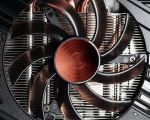
How to Remove a Virus From Your Computer Without Losing Data
Learn how to safely remove a virus from your computer without losing any data. Follow these steps to protect your data and ensure a clean and healthy system.
Aug 11, 2025
How to Build a Custom Gaming PC – Beginner’s Guide
Learn how to build a custom gaming PC with this beginner’s guide. Step-by-step instructions for choosing components, assembling your PC, and setting up for the best gaming experience. Visit Computer Repair for expert advice and products.
Aug 10, 2025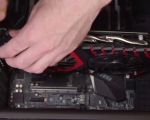
How to Recover Deleted Files on Windows 10 and 11: A Step-by-Step Guide
Learn how to recover deleted files on Windows 10 and 11 using simple and effective methods. Follow our step-by-step guide to restore your lost files today.
Aug 09, 2025
How to Clone a Hard Drive to SSD – Full Migration Guide
Learn how to clone a hard drive to an SSD with our comprehensive migration guide. Step-by-step instructions for a smooth and successful hard drive to SSD transition.
Aug 08, 2025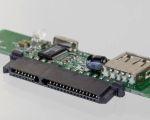
How to Fix Common Windows Update Errors Quickly and Effectively
Struggling with Windows update errors? Learn how to fix common problems and ensure your system stays up to date. Explore troubleshooting tips and solutions for smooth updates on your Windows device.
Aug 07, 2025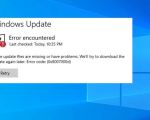
Related Categories
Recommended

kks pawn tullahoma tn
(376)
315 S Jackson St, Tullahoma, TN 37388, USA

santa cruz electronics
(179)
2808 Soquel Ave, Santa Cruz, CA 95062, USA

ubreakifix natick
(183)
843 Worcester St Suite D, Natick, MA 01760, USA

micro center mass
(5321)
730 Memorial Dr, Cambridge, MA 02139, USA

best buy pueblo colorado
(2138)
5890 N Elizabeth St, Pueblo, CO 81008, USA

jewelry stores in tullahoma tn
(376)
315 S Jackson St, Tullahoma, TN 37388, USA
Popular
How to Boot Dell Optiplex from USB Drive | Step-by-Step Guide
Feb 07, 2025
How to Create a Bootable USB Drive for BIOS Updates: A Step-by-Step Guide
Feb 04, 2025Dell BIOS USB Boot: A Step-by-Step Guide to Booting from a USB Drive
Jan 26, 2025How to Access Dell Laptop Boot Menu Using the Right Boot Menu Button
Jan 08, 2025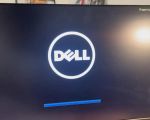
Boot Menu Key for Acer Laptop: How to Access and Use It
Jan 24, 2025
Acer BIOS Boot from USB Configuration: A Complete Setup Guide
Jan 19, 2025How to Boot from USB on Dell XPS: A Complete Step-by-Step Guide
Jan 22, 2025
HP Laptop Boot Key: Essential Guide to Accessing BIOS and Boot Options
Jan 10, 2025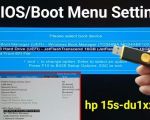
Dell Computer Boot Menu Navigation – A Complete Guide to Boot Settings and Options
Feb 05, 2025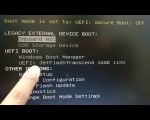
Understanding the HP Boot Key: A Complete Guide for Users
Jan 13, 2025


